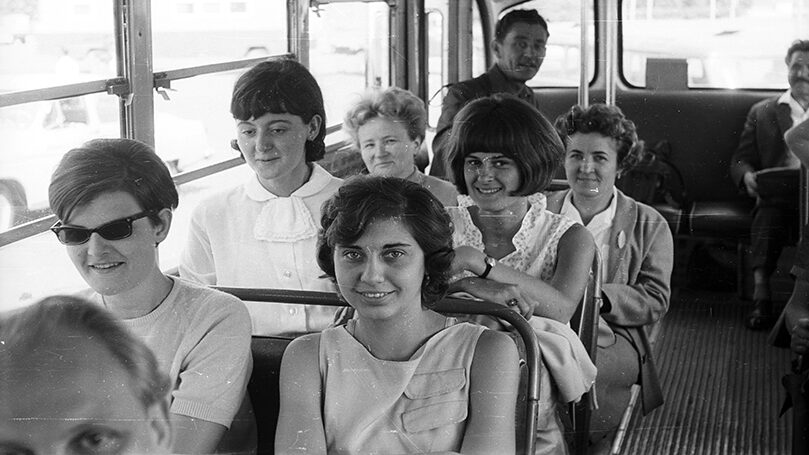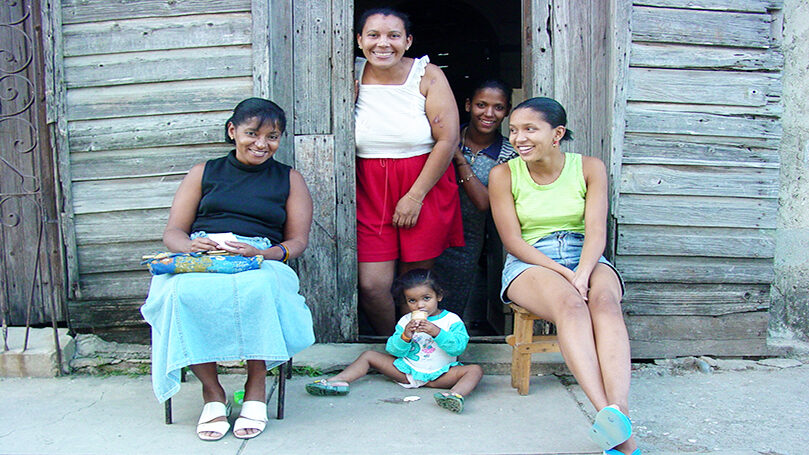
Education, culture, civilization, freedom — all these high-sounding words are accompanied in all the capitalist, bourgeois republics of the world with incredibly foul, disgustingly vile, bestially crude laws that make women unequal in marriage and divorce, that make the child born out of wedlock and the “legally born” child unequal and that give privileges to the male and humiliate and degrade womankind.
—Vladimir Lenin, “Soviet Power and the Status of Women”
The recent overturning of Roe v. Wade casts a shadow over the country and, simultaneously, brings the country’s political and ideological divisions into sharp relief. In contrast to the political division, the medical community is overwhelmingly united and vocally against the ruling. A statement from the American College of Obstetricians and Gynecologists following the Supreme Court decision in Dobbs v. Jackson is unequivocal:
Reversing the constitutional protection for safe, legal abortion established by the Supreme Court nearly 50 years ago exposes pregnant people to arbitrary state-based restrictions, regulations, and bans that will leave many people unable to access needed medical care. The restrictions put forth are not based on science or medicine; they allow unrelated third parties to make decisions that rightfully and ethically should be made only by individuals and their physicians. . . . [T]his is a dark and dangerous time for the women and doctors of America.
American Medical Association President Jack Resneck, Jr., M.D., was also clear in condemning the ruling:
States that end legal abortion will not end abortion — they will end safe abortion, risking devastating consequences, including patients’ lives. . . . Access to legal reproductive care will be limited to those with the sufficient resources, circumstances, and financial means to do so — exacerbating health inequities by placing the heaviest burden on patients from Black, Latinx, Indigenous, low-income, rural, and other historically disadvantaged communities who already face numerous structural and systemic barriers to accessing health care.
Our own party has rightfully joined the chorus in condemnation of the Supreme Court’s decision, adding our own voice and unique perspective as communists. We recognize the intimate relationship between the issue of reproductive rights and the struggle for the realization of the full potential and participation of every person in society. Although we join with others in mourning this reactionary setback, we remain optimistic of the possibilities for revolutionary change that can be brought about by a diverse, inclusive, and united people’s movement.
The history of socialism provides a rich source of inspiration to draw from. Prior and ongoing experiments in building socialism let us note both successes and setbacks as we develop our response, centered in our own political and cultural context.
The Soviet Union
The October Revolution gave birth to the first successful socialist experiment. Women were not only invited but encouraged to join in the collective effort. Yet, two revolutions and a civil war left the nascent Soviet Union in a weak position. Lenin compared the state of Russia in this period to that of a man half beaten to death.
Marlis Allendorf, in the book Women in Socialist Society, writes,
The participation of women in the building up of the country, their inclusion in productive work, was at the same time the most important condition for woman’s emancipation. Only in productive work beyond her family circle could she recognize her abilities, and gain material independence from the despotism of her breadwinner husband.
In 1920 the Soviet Union became the first country in the world to legalize abortion on request. The People’s Commissariats of Health and of Justice passed a decree, noting that the procedure was to be “made freely and without any charge” and that doctors providing the procedure “for the purposes of profit” would be criminally punished. The decree also proscribed the procedure to anyone other than a medically trained doctor. Yet, the decree also referred to abortion as a “serious evil,” and the ultimate purpose of the decree, together with the introduction of progressive maternal and child health policies, was for the “gradual disappearance of this evil.”
During this period in the Soviet Union there were essentially two separate “theories” at play with regard to abortion. The first was a pro-natalist position that encouraged women to have more children to increase the population and strengthen the country’s ability to grow and develop. The pro-natalist position argued that abortion did the exact opposite. Therefore, abortion should remain illegal. The second position argued for the legalization of abortion in order to improve maternal and child health outcomes and that abortion would slowly disappear as material conditions in the country improved. This position argued that women would eventually choose not to resort to abortion as a means of birth control. Moreover, women would choose to have more children as it became easier to birth and raise children.
The book Equality of Women in the USSR (Foreign Languages Publishing, 1957) contextualizes the decision to legalize abortion, despite the precarious situation of the country at that time. Abortion was illegal in pre-revolutionary Russia “when there were no medical grounds for them.” Yet, the “grave consequences” to both those seeking abortions and those providing them pushed the Soviet government to pass the decree providing for free abortions in hospitals.
In contrast, at this time in the United States abortion was equally viewed as an evil and was also illegal. It was common for women to have an abortion, but there were clear differences based on class. Working women were forced to turn to dangerous methods and incompetent practitioners, while women with wealth and prestige could obtain safe procedures. Then, as now, one’s resources, circumstances, and financial means determined access to healthcare.
Again, Marlis Allendorf writes,
In 1929 when every ruble in the Soviet Union was needed mainly for the development of heavy industry, the state put aside more than one hundred million rubles from social insurance funds for the care of pregnant women, both pre-natal and at birth, and for the care of the newborn child, as well as for the feeding of children in general.
Changes to Soviet policies targeting maternal and child health aimed to alleviate the unique burden experienced by women workers both at home and in the office or factory. The motivation was to make pregnancy and motherhood less burdensome, not to eradicate it.
Despite improvement in material and social conditions, including the ability to have and raise children, birthrates decreased as women sought to limit the size of their families. Additionally, official statistics showed an increase in abortions. This observation was in direct contradiction to the justification used for the liberalization of abortion. There was a fear that the falling birthrate would derail the country’s plans for industrialization.

Although the number of abortions increased following passage of the decree, the higher figures, to a large extent, reflected registration of previously illegal abortions. Safety of the woman and the safe provision of abortion were the guiding principles of the Soviet decree, its view as a necessary evil notwithstanding.
Eventually the 1936 decree “On the Prohibition of Abortions and Greater Material Assistance for Women in Childbirth” was passed, making abortion illegal again except when continued pregnancy “endangers life or threatens serious injury” and instituting criminal penalties on both the doctors that provide the procedure and the women who obtain them.
Illegal abortions rose sharply following adoption of the 1936 decree. Unsurprisingly, the result was an increase in abortion-related morbidity and mortality from infection and fever, perforation and hemorrhage, chronic inflammation and subsequent sterility, and ovarian and uterine dysfunction.
This trend was reversed in 1955 with adoption of the decree “The Abolition of the Prohibition Against Abortion,” which noted that “measures carried out by the Soviet state to promote motherhood and protect children and the continuous growth of consciousness and culture of women actively involved in all areas of the national economic life of the country now make it possible to abandon the prohibition of abortion by law.”
Instead of allowing abortion for the sole purpose of increasing the population, the 1955 decree recognized the central role of women in Soviet society and their agency. The book Equality of Women in the USSR explains that passage of the decree allowed women to decide for themselves whether or not to have an abortion. “Now, women who want to cut short their pregnancy do not have to risk their health and lives by resorting to the services of quacks.”
Moreover, as Sasha Talaver in an article for Jacobin writes, “the 1950s debates on abortion were strongly connected with research on women’s living conditions and childcare facilities” and so can “be seen within the socialist-feminist frame of reproductive justice.”
In comparison, at this time the United States viewed the “state-socialist promotion of women into the formal labor force [as] evidence of Communism’s mutation of God-given gender roles and its ‘unnatural’ (and therefore evil) designs on the destruction of the family.”
And what of contraception? In contrast to abortion, contraception was not viewed as a social phenomenon in the Soviet Union. Rather, studies regarding contraception were of a medical and biological nature. Abortion was seen as a primary form of birth control and means of controlling family size.
By the 1990s, following the forceful and undemocratic dissolution of the Soviet Union, there was a sharp decline in the fertility rate in Russia. Subsequent concerns about population decline in the Russian Federation became widespread, and attempts to mitigate population decline included increasing financial support for young children in Russia and, eventually, restricting access to abortion.
In 2011 the Russian Parliament passed a law restricting abortion to the first 12 weeks of pregnancy, with an exception up to 22 weeks if the pregnancy was the result of rape, and at any point during pregnancy for medical necessity. The law also includes a mandatory waiting period.
Germany and the German Democratic Republic
The example of Germany over the years shows the contrast in approach to reproductive justice under feudalism, capitalism, fascism and socialism. Legislation outlawing abortion in Germany dates back to the Penal Codes of Prussia (1851) and the North German Federation (1870), and the establishment of the German Empire. The short-lived Weimar Republic lifted the ban somewhat, but abortion again was severely punished during the Nazi period. Importantly, the Nazis’ eugenics laws only punished Aryan women for abortion. Abortion was permitted and sometimes forced in cases of perceived fetal deformity or to cull the population of “undesirables,” e.g., the physically disabled, persons with intellectual disabilities, and non-Aryan nationalities and ethnic groups such as Slavs.
Following the end of World War II, both West and East Germany returned to the legal situation of the Weimar Republic, which decriminalized abortion when the life of the mother was at risk. Yet, the legal requirements to obtain an abortion in West Germany were strict and often led to women traveling elsewhere, particularly the Netherlands, to obtain an abortion. East Germany had a more liberal set of legal requirements.
Like the Soviet Union, there was ideological tension between a woman’s role as worker and mother, especially in the period of recovery and reindustrialization following the war. Historian Danna Harsch in “Society, the State, and Abortion in East Germany, 1950–1972” writes, “The East German case provides evidence of a strong correlation between ideas about women’s equality and their participation in production, but it also suggests that talk about women’s rights was associated with an emerging self-confidence of citizens vis-a-vis the state. . . . By the late 1960s, rhetoric about abortion communicated a robust sense of women’s plight and rights and a notable, if peculiarly state-socialist, sense of entitlement” (italics in original).
 Further liberalization of abortion in East Germany occurred in 1972. Abortion on demand up to 12 weeks of pregnancy and free contraception with a doctor’s prescription were made available to all women above 16 years of age. In contrast, abortion was illegal in West Germany. Section 218 of the penal code stated that abortion was unlawful, and it levied a prison sentence up to three years for attempting to undergo an abortion. This dichotomy continued until unification.
Further liberalization of abortion in East Germany occurred in 1972. Abortion on demand up to 12 weeks of pregnancy and free contraception with a doctor’s prescription were made available to all women above 16 years of age. In contrast, abortion was illegal in West Germany. Section 218 of the penal code stated that abortion was unlawful, and it levied a prison sentence up to three years for attempting to undergo an abortion. This dichotomy continued until unification.
As Bruni de la Motte and John Green write in their book Stasi State or Socialist Paradise, “After unification it became necessary to bring West German and East German law on this issue into alignment. In 1992, section 218 was amended to adopt GDR legislation, but a compulsory consultation prior to the procedure was added.”
The result is that abortion in Germany today remains illegal under section 218 of the German criminal code. However, it is nonpunishable under specific circumstances as outlined in section 218a. These include obtaining an abortion within the first trimester (12 weeks) of the pregnancy and having mandatory counseling beforehand, observing a required three-day waiting period between the counseling and the abortion, and if the pregnancy is the result of a sexual assault or if the physical and/or mental health of the pregnant individual is at risk.
Vietnam
Vietnam has a long history of providing legal abortion, and continuing to expand access to reproductive services since independence. Abortion was first legalized in 1945 following the country’s independence from France and in the 1960s was made available up to 22 weeks of pregnancy. Today, women retain the ability to obtain an abortion on demand as part of broad reproductive healthcare coverage.

Socialist Vietnam was, and remains, committed to advancing gender equity, similar to the Soviet Union and East Germany. The 1959 constitution unequivocally outlined equality of the sexes in all aspects of economic, political, social, and cultural life. The Marriage and Family Law passed at the end of 1959 “affirmed four basic principles on marriage and family: (1) Free and progressive marriage; (2) Monogamy; (3) Equality between men and women, protection of women’s interests in family; (4) Protection of interests of children.”
The law was updated and expanded in 1986 following Vietnam’s successful resistance against American aggression and unification between the North and South. Passage of the Law on Protection of People’s Health in 1989 guaranteed free abortion and contraception to married women. Subsequent updates to the Marriage and Family Law in 2000 and 2014 demonstrate the evolution of state policies in response to changing material conditions.
Cuba
A final example of continued, progressive advancement within socialism is the Cuban Revolution. Abortion became legal in Cuba in 1936. As in other countries, abortion had been available only in cases of rape, medical necessity to prevent loss of the pregnant person’s life, and in the likelihood of serious fetal anomalies.
Until the 1959 revolution Cuba was a colonial outpost for Spain and later the United States. Private medical clinics were the standard and provided abortion only to those with financial means. Gil Green in his book Cuba at 25: The Continuing Revolution notes, “Before the revolution, there was no public health system; no accurate health records were kept, nothing was done in preventative medicine, and all medical services were private . . . infant mortality was high.”
The triumph of the socialist revolution in Cuba brought an improvement in maternal and child health. By 1983, “99% of all births now take place in hospitals. As a result, infant mortality declined from 43 deaths per 1000 live births in 1962, to 18 in 1982 and only 14.2 for the first six months of 1983.” Contemporary data from the United Nations show that both Cuba’s infant and maternal mortality rates are now lower than those in the United States. This remarkable achievement is the result of deliberate planning by the state to address living standards, education, and healthcare.

Abortion on request was institutionalized in 1965 under four conditions: “that it is the woman who decides, it needs to take place at a hospital, it needs to be carried out by expert staff, and it needs to be totally free.” Moreover, “official decriminalization took place in 1987, when the Penal Code, which is still in force, established that it was only a crime when it is done for profit, outside of health institutions, and by non-medical staff or against a woman’s will.”
The participation of mass organizations, such as the Cuban Federation of Women and the Cuba Workers Federation, were instrumental in securing abortion, comprehensive reproductive healthcare, and other protections. Building socialism in Cuba has been and remains a dynamic and democratic process.
Like Vietnam, Cuba’s socialist experiment is ongoing. Unlike in the United States, Cubans are directly involved in improving the economic, political, and social institutions needed to fully realize their rights. Cuba is currently in the process of updating its 1975 Family Code to legalize same-sex marriage, expand the rights of children, formalize the use of assisted reproductive technology (e.g., IVF, ICSI), fight gender-based violence, and protect the elderly. The prospect of having these rights stripped away by an unelected, unaccountable branch of government is inconceivable.
Conclusion
The legacy of past socialist states reveals some shortcomings. Despite the progressive nature of women’s rights and abortion within the Soviet Union and East Germany, these socialist experiments failed to address the needs and concerns of nonbinary, gender queer, and transgender individuals. However, contemporary socialist experiments in Vietnam and Cuba are forging a path forward that includes full, realized rights enshrined in law for all citizens.
Marxism is a science. It lives and breathes, grows and evolves. Both past and present socialist experiments show the revolutionary nature of Marxism and provide guidance on securing reproductive justice, including abortion. While their histories are nuanced, collectively they demonstrate the commitment socialism has toward securing full equity for women. By upholding the humanity of every individual, the struggle for socialism extends rights of bodily autonomy to all. In the face of our contemporary society’s heightened repression, we must struggle collectively to overthrow capitalism and bring about the full realization of democracy and reproductive justice for all people.
The opinions of the author do not necessarily reflect the positions of the CPUSA.
Images: Protesters in U.S., Reproductive Freedom for All (Facebook); Soviet women on a bus, 1966, Wikimedia (CC SA 3.0); My Body My Choice, Die Linke (Facebook); Vietnamese women working at a construction site, UNIDO (BY-ND 2.0); Women and child in Cuba, Adam Jones, Wikimedia (CC BY-SA 2.0).


 Join Now
Join Now